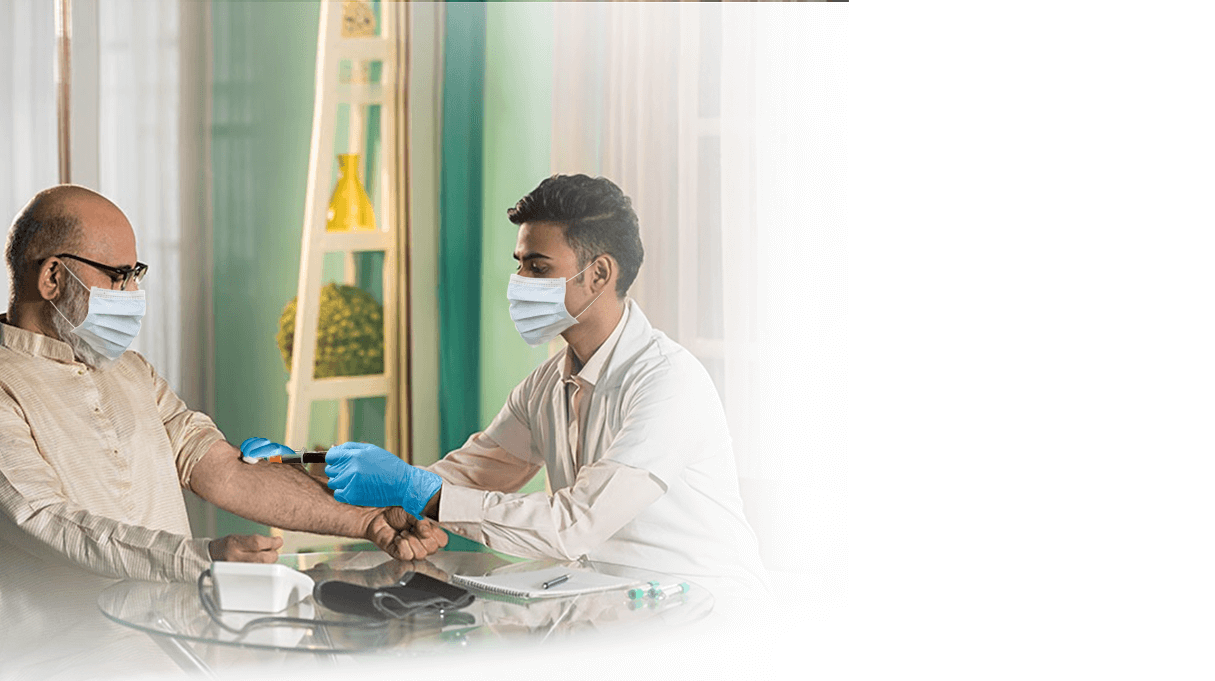Human Metapneumovirus (HMPV) is a respiratory virus that affects people of all ages, but it is particularly concerning for young children, older adults, and individuals with weakened immune systems. Discovered in 2001, this virus is now recognized as a leading cause of respiratory infections worldwide.
What Is HMPV?
HMPV belongs to the Paramyxoviridae family, closely related to respiratory syncytial virus (RSV). It causes upper and lower respiratory tract infections, ranging from mild colds to severe pneumonia. According to the Centers for Disease Control and Prevention (CDC), HMPV is responsible for around 5-10% of hospitalizations related to respiratory infections globally, particularly during late winter and spring.
HMPV has emerged as a notable pathogen in recent years due to its widespread impact and similarity to other respiratory viruses like influenza and RSV. Despite its discovery over two decades ago, awareness about this virus remains low compared to more well-known pathogens.
What are the Causes of HMPV Infection?
HMPV spreads from person to person through various mechanisms:
- Respiratory droplets: Sneezing, coughing, or even talking can release droplets carrying the virus into the air, which can then be inhaled by others.
- Direct contact: Touching surfaces contaminated with the virus and then touching your face, particularly the eyes, nose, or mouth, can facilitate infection.
- Close contact: Spending time in crowded places, especially during peak seasons like late winter and spring, increases the risk of exposure.
The virus is highly contagious and can survive on surfaces for several hours, making hygiene and preventive measures crucial in reducing its spread.
Am I at Risk of Contracting HMPV Infection?
While anyone can contract HMPV, certain groups are more vulnerable due to their age or underlying health conditions:
- Infants and young children: Their developing immune systems are less equipped to fight the virus, making them prone to severe respiratory issues.
- Older adults: Aging naturally weakens the immune response, increasing the likelihood of complications from infections.
- Immunocompromised individuals: People undergoing treatments like chemotherapy, organ transplant recipients, or those with chronic illnesses such as HIV are at higher risk.
- People with underlying conditions: Chronic diseases like asthma, chronic obstructive pulmonary disease (COPD), and heart diseases exacerbate the severity of HMPV infections.
What are the Common Symptoms of HMPV?
Symptoms of HMPV infection vary widely, ranging from mild cold-like symptoms to severe respiratory distress. The presentation often overlaps with other respiratory illnesses such as RSV, influenza, and COVID-19.
Mild Symptoms of HMPV:
- Runny or congested nose
- Cough
- Sore throat
- Mild fever
- Fatigue
Severe Symptoms of HMPV:
- Difficulty breathing or shortness of breath
- Wheezing
- Chest pain
- Rapid breathing, particularly in young children
- Bluish tint to lips or skin (cyanosis), indicating lack of oxygen
According to research, HMPV is responsible for approximately 4% of children hospitalized with respiratory issues. Severe cases can lead to complications like pneumonia, bronchiolitis, and exacerbation of pre-existing conditions such as asthma.
Diagnosis of HMPV- How Do I Know If I Have HMPV?
Diagnosing HMPV can be challenging due to its symptomatic similarities to other respiratory viruses. However, accurate and timely diagnosis is essential for effective management, especially in high-risk populations.
Diagnostic Tests for HMPV
· PCR testing (Polymerase Chain Reaction): It is Considered the gold standard for detecting HMPV and identifies the genetic material of the virus with high sensitivity and specificity.
· Rapid antigen testing: This test detects specific proteins from the HMPV virus. It provides quicker results but has lower sensitivity compared to PCR.
· Viral culture: In this test, the virus is grown in a controlled lab environment to confirm its presence. While accurate, it is time-consuming and not commonly used for immediate diagnosis.
· Serology testing: This test measures antibodies produced by the immune system in response to HMPV. It is useful for identifying past infections rather than current ones.
How Is HMPV Diagnosed?
Healthcare professionals follow a systematic approach to diagnose HMPV:
- Medical History: Physicians inquire about recent exposure to respiratory illnesses, seasonal outbreaks, and symptoms.
- Physical Examination: Doctors look for signs such as wheezing, chest congestion, and fever.
- Lab Tests: Nasal or throat swabs are collected and sent for PCR or antigen testing to confirm the presence of HMPV.
Why is Early Diagnosis of HMPV Important?
Early diagnosis is vital for several reasons:
- Preventing complications: Severe cases can progress to pneumonia, bronchiolitis, or respiratory failure if left untreated.
- Reducing transmission: Identifying infected individuals early allows for isolation, preventing further spread of the virus.
- Optimizing treatment: While no specific antiviral therapy exists for HMPV, early supportive care, such as oxygen therapy or fluids, can significantly improve outcomes.
HMPV: A Growing Concern
Human Metapneumovirus (HMPV) is currently experiencing a notable increase in cases, particularly in China, where it has been linked to 6.2% of positive respiratory illness tests and 5.4% of related hospitalizations, surpassing figures for COVID-19, rhinovirus, and adenovirus.
This surge has led to concerns about the potential for HMPV to become an epidemic. However, health experts emphasize that while the rise is significant, it aligns with typical seasonal patterns observed in respiratory viruses during winter months.
As of now, there is no evidence to suggest that HMPV is spreading from one country to another in an unusual manner. The transmission dynamics of HMPV are similar to other respiratory viruses, primarily spreading through respiratory droplets when an infected person coughs or sneezes. Standard preventive measures, such as good hygiene practices and avoiding close contact with infected individuals, remain effective in controlling its spread.
What Can I Do To Prevent HMPV Infection?
Currently, no vaccine exists for HMPV. However, several preventive measures can reduce the risk of infection:
Hygiene Practices:
- Wash hands frequently with soap and water for at least 20 seconds.
- Use alcohol-based hand sanitizers when handwashing is unavailable.
- Avoid touching your face, especially the eyes, nose, and mouth.
Social Measures:
- Stay away from individuals showing signs of respiratory illness.
- Practice social distancing in crowded or poorly ventilated areas.
Environmental Cleaning:
- Disinfect frequently touched surfaces, such as doorknobs, phones, and countertops.
- Regularly clean toys and shared items in households with young children.
Strengthening Immunity:
- Maintain a balanced diet rich in vitamins and minerals, particularly vitamin C and zinc.
- Engage in regular physical activity to boost overall health.
- Ensure adequate sleep and stress management to support immune function.
When Should I See a Doctor?
It is crucial to consult a healthcare provider if symptoms worsen or fail to improve after a few days. Seek immediate medical attention for:
- Severe breathing difficulties
- Persistent high fever unresponsive to over-the-counter medications
- Signs of dehydration, such as dry mouth, dark urine, or reduced urination
- Cyanosis (bluish tint to skin or lips), indicating oxygen deprivation
Early Diagnosis, Prompt Supportive Care!
HMPV infection is a significant but often underrecognized public health concern. Understanding its causes, symptoms, and diagnostic methods empowers individuals to seek timely care and adopt preventive measures. While no specific treatment exists, early diagnosis and supportive care can significantly improve outcomes, particularly for high-risk populations. By practicing good hygiene, staying informed about seasonal trends, and seeking medical advice when necessary, you can protect yourself and your loved ones from this common yet potentially severe respiratory virus.


